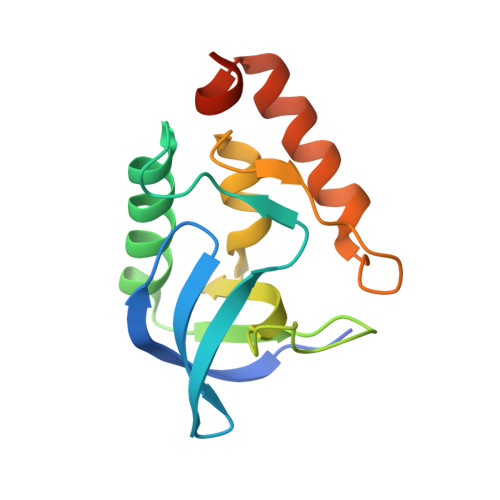Structural and thermodynamic consequences of burial of an artificial ion pair in the hydrophobic interior of a protein.
Robinson, A.C., Castaneda, C.A., Schlessman, J.L., Garcia-Moreno E, B.(2014) Proc Natl Acad Sci U S A 111: 11685-11690
- PubMed: 25074910
- DOI: https://doi.org/10.1073/pnas.1402900111
- Primary Citation of Related Structures:
3NHH, 3QOL - PubMed Abstract:
An artificial charge pair buried in the hydrophobic core of staphylococcal nuclease was engineered by making the V23E and L36K substitutions. Buried individually, Glu-23 and Lys-36 both titrate with pKa values near 7. When buried together their pKa values appear to be normal. The ionizable moieties of the buried Glu-Lys pair are 2.6 Å apart. The interaction between them at pH 7 is worth 5 kcal/mol. Despite this strong interaction, the buried Glu-Lys pair destabilizes the protein significantly because the apparent Coulomb interaction is sufficient to offset the dehydration of only one of the two buried charges. Save for minor reorganization of dipoles and water penetration consistent with the relatively high dielectric constant reported by the buried ion pair, there is no evidence that the presence of two charges in the hydrophobic interior of the protein induces any significant structural reorganization. The successful engineering of an artificial ion pair in a highly hydrophobic environment suggests that buried Glu-Lys pairs in dehydrated environments can be charged and that it is possible to engineer charge clusters that loosely resemble catalytic sites in a scaffold protein with high thermodynamic stability, without the need for specialized structural adaptations.
- Department of Biophysics, Johns Hopkins University, Baltimore, MD 21218; and.
Organizational Affiliation:


















